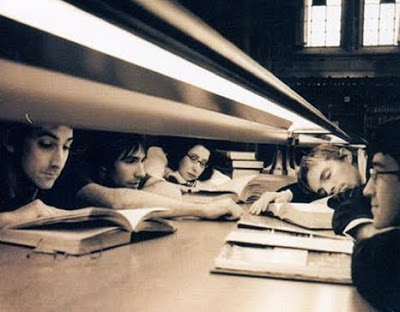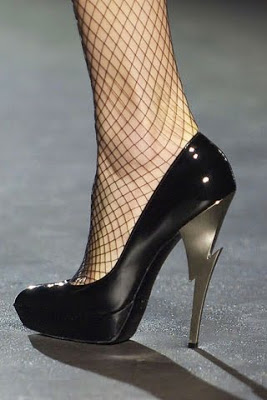Philosophy

Well, I must admit that hardcore physics [computational, quantum, or topological physics] can be impossible to crack and understand but here are two everyday items touched by the realm of physics.

Even if you don't own a cat you've probably seen one lap up a bowl of milk. Exactly how our feline friends go about doing it has been a scientific mystery, until now: The journal Science has published the conclusive study of how cats drink.
It turns out that trying to capture cat-drinking on film is a bit harder than you might expect.
"You don't induce the cat to drink; you just wait until the cat decides to drink," says Roman Stocker, an author of the study and an associate professor at MIT who specializes in fluid mechanics. Stocker and his colleagues spent hours filming — or trying to film — cats lapping.
"The nice thing about it is that the cat laps with an impressive frequency of four times per second, so if you catch only a few seconds of lapping you have many laps," Stocker explains.
Watching in slow motion reveals that cats of all sizes, from tabbies to tigers, have a very elaborate way of drinking. First, they move the tip of their tongue onto the surface of the water to flick the water up so that a little jet of liquid flies into the air. Then, in a flash, they catch the jet in their mouth.
What's more, when the researchers crunched the numbers, they found the cats had it down.
"They really know how to do it perfectly, almost as if they're doing the equations in their head," says Pedro Reis, a co-author of the study and assistant professor at MIT.
The Value Of Pet Physics?
The whole system is much more elaborate than that of dogs, which simply scoop up the water with their tongues.
"I have no idea why cats don't just do it the ordinary way, but you know that's the weird, interesting thing about biology: What nature does is not necessarily the best way to do things," says David Hu, a researcher at Georgia Tech. "I think that dogs generally have a better way to do it."
Full disclosure: Hu owns a poodle and also recently completed an exhaustive study of how dogs shake themselves dry.
All this pet physics might seem a little silly, but it has a point.
Stoker thinks that cat tongues might guide the design of ultraflexible robots. And Hu, like some other researchers, is interested in studying the movements of fluids. But modeling drops on a computer can be hard to do.
"These animals are around and they have evolved these very great ways to deal with very small quantities of water," Hu says. "How to deal with very small amounts of droplets is a very hard problem, and we're just looking for inspiration wherever we can get it."

How on Earth do women walk in high heels? Seriously now . . . shouldn't they tip over?
The answer is: Science.
Lady Gaga's massive 10-inch tapered heels may be purely for show, rarely making an appearance outside of the artist's music videos. But three-inch or higher heels are hard for many people to understand -- even scientists.
"Many of my physicist colleagues have no trouble understanding quantum mechanics but can't figure out how women can wear high heels," admitted Dr. Laura Grant, a physicist from Liverpool University.
Yet the recipe for safe stilettos seems fairly straightforward: Two parts sacrifice and a dash of solid steel, said Fred Allard, creative director for Nine West, one of the world's largest manufacturers of women's shoes.
"In the center of the mold, a steel rod is inserted for safety and solidity purposes," Allard told FoxNews.com. "The density of the plastic in the heel is also very important, and we make sure during production that no air bubbles get into the center, which can cause weakness."
Got it? A tiny piece of leather is suspended by steel and plastic (hopefully more steel than plastic). But how do women walk in them? Or Prince, for that matter?
Turns out, there's a formula for that. In 2004, researchers at the University of Surrey devised an equation that uses shoe size, the Pythagorean theorem, and several sociological variables to calculate how high heels can safely go: h = Q x(12+3s /8)
Variables in the equation include aesthetic appeal of the shoe, experience in wearing high heels, how many months the shoe has been in style, and even the amount of alcohol consumed.
Really.
The cost of the shoe plays a factor too, said Dr. Paul Stevenson of the University of Surrey, who developed the equation.
"Clearly, if the shoe is particularly expensive, you can put up with a higher heel," Stevenson said.
Obviously, it's not exact science. But it does give would-be wearers an idea of how much height they can tolerate. In most cases, five inches seems to be the max, though Allard said Nine West puts no limit on the height of a heel. "The height is only limited by the foot's configuration within the shoe," he told FoxNews.com.
But wearing high heels requires more than balance. They demand sacrifice: Sacrifice in comfort. Sacrifice in practicality. Sacrifice in stability. Sacrifice in mobility. And in some cases, sacrifice in health, including knee, hip, feet, and back injury, as documented by WebMD.
In other words, beauty is pain. Women don't wear heels because they are comfortable; they endure the pain because the tradeoff is looking really hot.
Why all the health risks? Science can explain that too. Specifically, Newton's second law of motion, which states for every action there is always an equal and opposite reaction.
In laymen's terms, the weight of a woman's body is almost entirely focused on a heel the size of a pencil eraser, which creates immense pressure for such a small area. Much more, in fact, than a 6,000-pound elephant -- which explains why elephants can walk on grass but women in spike heels can't without sinking into the ground.
Conversely, that immense pressure reflects back into the shoe wearer's heel, back, and everything in between, which explains the associated health risks to the body. That said, heels can also have a positive effect on well-being.
"They have a way of making me feel better about myself," Dani Gooch, a high-heeled mother of two told FoxNews.com. "In that sense, I feel more confident in them than I do in other shoes."
Exactly, said shoe designer Terry DeHavilland.
"People say they're bad for the feet, but they're good for the mind. What's more important?"
- What Is Superstition?
Between it being Friday the 13th and the Stevie Wonder kick I've been on all week, let's ask about superstition. Surely it's more than the line "when you believe in things you don't understand" because we can have reasonable beliefs about...
- Happy Birthday Chuck Taylor
Today would be the 108th birthday of Chuck Taylor, possibly the greatest shoe salesman in history. The Chuck Taylor hightop sneaker is every bit the American fashion icon as the Levi 501 or the leather bomber jacket. A turn of the century basketball...
- Some Feline Physics
Brian Greene's 23rd dimension cat. Convex and concave. Original Kliban "String Theory". The Curie's lab cats. Two cats discover Newton's balls.. CAT PHYSICS Presented by the Institute of Theoretical & Applied Cat Physics 1....
- Parallel Universes Exist Reports Fox News, Ya Right
And so Fox News is reporting the lastest in science fiction. "Freaky Physics Proves Parallel Universes Exist" by John Brandon April 5th, 2010 FOXNews.com Look past the details of a wonky discovery by a group of California scientists -- that a quantum...
- Shoe Fitting X-ray Device...long Gone
See X-Ray Shoe Fitting Machine below. A shoe sales gimmick...but cool. These machines were common in just about every shoe store in the country in the late 1940s and early 1950s. Who knew of the potential dangers and they were plagued with technical...
Philosophy
And you thought physics was boring

Well, I must admit that hardcore physics [computational, quantum, or topological physics] can be impossible to crack and understand but here are two everyday items touched by the realm of physics.

"Pet Physics: The Uncanny Lapping Of Cats"
by
Geoff Brumfiel
November 11th, 2010
NPR
by
Geoff Brumfiel
November 11th, 2010
NPR
Even if you don't own a cat you've probably seen one lap up a bowl of milk. Exactly how our feline friends go about doing it has been a scientific mystery, until now: The journal Science has published the conclusive study of how cats drink.
It turns out that trying to capture cat-drinking on film is a bit harder than you might expect.
"You don't induce the cat to drink; you just wait until the cat decides to drink," says Roman Stocker, an author of the study and an associate professor at MIT who specializes in fluid mechanics. Stocker and his colleagues spent hours filming — or trying to film — cats lapping.
"The nice thing about it is that the cat laps with an impressive frequency of four times per second, so if you catch only a few seconds of lapping you have many laps," Stocker explains.
Watching in slow motion reveals that cats of all sizes, from tabbies to tigers, have a very elaborate way of drinking. First, they move the tip of their tongue onto the surface of the water to flick the water up so that a little jet of liquid flies into the air. Then, in a flash, they catch the jet in their mouth.
What's more, when the researchers crunched the numbers, they found the cats had it down.
"They really know how to do it perfectly, almost as if they're doing the equations in their head," says Pedro Reis, a co-author of the study and assistant professor at MIT.
The Value Of Pet Physics?
The whole system is much more elaborate than that of dogs, which simply scoop up the water with their tongues.
"I have no idea why cats don't just do it the ordinary way, but you know that's the weird, interesting thing about biology: What nature does is not necessarily the best way to do things," says David Hu, a researcher at Georgia Tech. "I think that dogs generally have a better way to do it."
Full disclosure: Hu owns a poodle and also recently completed an exhaustive study of how dogs shake themselves dry.
All this pet physics might seem a little silly, but it has a point.
Stoker thinks that cat tongues might guide the design of ultraflexible robots. And Hu, like some other researchers, is interested in studying the movements of fluids. But modeling drops on a computer can be hard to do.
"These animals are around and they have evolved these very great ways to deal with very small quantities of water," Hu says. "How to deal with very small amounts of droplets is a very hard problem, and we're just looking for inspiration wherever we can get it."

"The Science of High Heels: How Physics Keeps Women From Falling Down"
by
Blake Snow
November 11th, 2010
FoxNews.com
by
Blake Snow
November 11th, 2010
FoxNews.com
How on Earth do women walk in high heels? Seriously now . . . shouldn't they tip over?
The answer is: Science.
Lady Gaga's massive 10-inch tapered heels may be purely for show, rarely making an appearance outside of the artist's music videos. But three-inch or higher heels are hard for many people to understand -- even scientists.
"Many of my physicist colleagues have no trouble understanding quantum mechanics but can't figure out how women can wear high heels," admitted Dr. Laura Grant, a physicist from Liverpool University.
Yet the recipe for safe stilettos seems fairly straightforward: Two parts sacrifice and a dash of solid steel, said Fred Allard, creative director for Nine West, one of the world's largest manufacturers of women's shoes.
"In the center of the mold, a steel rod is inserted for safety and solidity purposes," Allard told FoxNews.com. "The density of the plastic in the heel is also very important, and we make sure during production that no air bubbles get into the center, which can cause weakness."
Got it? A tiny piece of leather is suspended by steel and plastic (hopefully more steel than plastic). But how do women walk in them? Or Prince, for that matter?
Turns out, there's a formula for that. In 2004, researchers at the University of Surrey devised an equation that uses shoe size, the Pythagorean theorem, and several sociological variables to calculate how high heels can safely go: h = Q x(12+3s /8)
Variables in the equation include aesthetic appeal of the shoe, experience in wearing high heels, how many months the shoe has been in style, and even the amount of alcohol consumed.
Really.
The cost of the shoe plays a factor too, said Dr. Paul Stevenson of the University of Surrey, who developed the equation.
"Clearly, if the shoe is particularly expensive, you can put up with a higher heel," Stevenson said.
Obviously, it's not exact science. But it does give would-be wearers an idea of how much height they can tolerate. In most cases, five inches seems to be the max, though Allard said Nine West puts no limit on the height of a heel. "The height is only limited by the foot's configuration within the shoe," he told FoxNews.com.
But wearing high heels requires more than balance. They demand sacrifice: Sacrifice in comfort. Sacrifice in practicality. Sacrifice in stability. Sacrifice in mobility. And in some cases, sacrifice in health, including knee, hip, feet, and back injury, as documented by WebMD.
In other words, beauty is pain. Women don't wear heels because they are comfortable; they endure the pain because the tradeoff is looking really hot.
Why all the health risks? Science can explain that too. Specifically, Newton's second law of motion, which states for every action there is always an equal and opposite reaction.
In laymen's terms, the weight of a woman's body is almost entirely focused on a heel the size of a pencil eraser, which creates immense pressure for such a small area. Much more, in fact, than a 6,000-pound elephant -- which explains why elephants can walk on grass but women in spike heels can't without sinking into the ground.
Conversely, that immense pressure reflects back into the shoe wearer's heel, back, and everything in between, which explains the associated health risks to the body. That said, heels can also have a positive effect on well-being.
"They have a way of making me feel better about myself," Dani Gooch, a high-heeled mother of two told FoxNews.com. "In that sense, I feel more confident in them than I do in other shoes."
Exactly, said shoe designer Terry DeHavilland.
"People say they're bad for the feet, but they're good for the mind. What's more important?"
- What Is Superstition?
Between it being Friday the 13th and the Stevie Wonder kick I've been on all week, let's ask about superstition. Surely it's more than the line "when you believe in things you don't understand" because we can have reasonable beliefs about...
- Happy Birthday Chuck Taylor
Today would be the 108th birthday of Chuck Taylor, possibly the greatest shoe salesman in history. The Chuck Taylor hightop sneaker is every bit the American fashion icon as the Levi 501 or the leather bomber jacket. A turn of the century basketball...
- Some Feline Physics
Brian Greene's 23rd dimension cat. Convex and concave. Original Kliban "String Theory". The Curie's lab cats. Two cats discover Newton's balls.. CAT PHYSICS Presented by the Institute of Theoretical & Applied Cat Physics 1....
- Parallel Universes Exist Reports Fox News, Ya Right
And so Fox News is reporting the lastest in science fiction. "Freaky Physics Proves Parallel Universes Exist" by John Brandon April 5th, 2010 FOXNews.com Look past the details of a wonky discovery by a group of California scientists -- that a quantum...
- Shoe Fitting X-ray Device...long Gone
See X-Ray Shoe Fitting Machine below. A shoe sales gimmick...but cool. These machines were common in just about every shoe store in the country in the late 1940s and early 1950s. Who knew of the potential dangers and they were plagued with technical...
